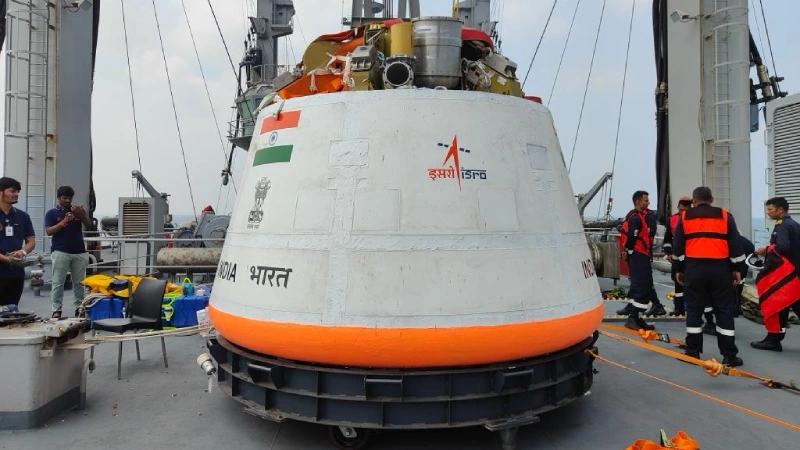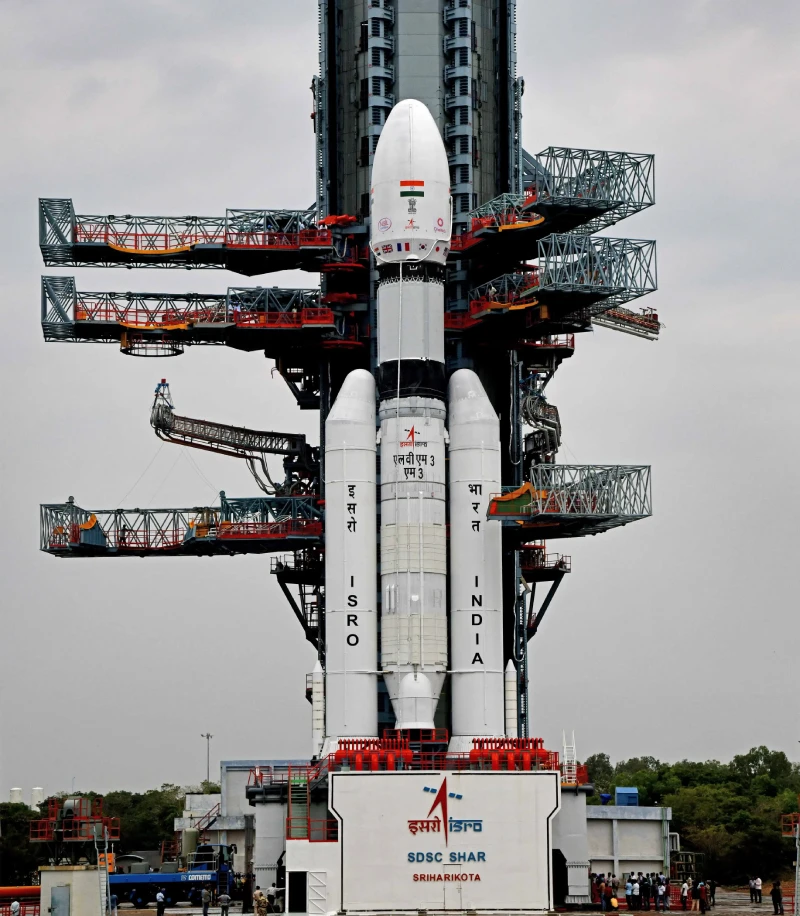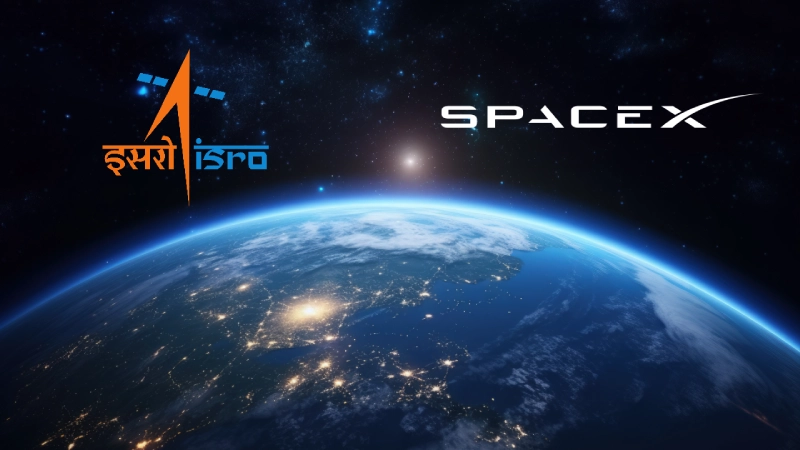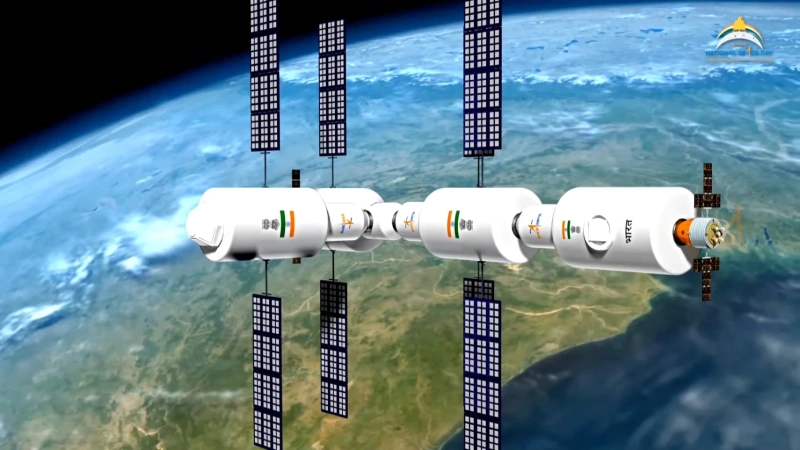Table of Contents
Highlights
- India’s Gaganyaan mission, led by ISRO, aims to launch the country’s first human spaceflight, with major progress underway in 2025.
- Key milestones include successful trials of the Crew Escape System and the human-rated LVM3 launch vehicle.
- Four Indian Air Force pilots have been selected as astronaut candidates, undergoing rigorous training in India and Russia.
- Vyommitra, a humanoid robot, will be part of the initial uncrewed mission to simulate human response in space.
- With eyes on a space station by 2035 and a crewed Moon mission by 2040, Gaganyaan is a cornerstone of India’s space ambitions.
India’s ambitious human spaceflight program, Gaganyaan, is expected to reach a pivotal phase in 2025. Spearheaded by the Indian Space Research Organization (ISRO), the mission aims to demonstrate India’s capability to send humans into space and bring them back safely. Currently, the program is undergoing critical tests and preparations to ensure the success of its future crewed missions. Gaganyaan is more than a technological feat; it is a statement of India’s growing influence in global aerospace and a significant step in fulfilling its vision of becoming a major spacefaring nation.
The mission is also expected to boost national pride, inspire youth towards STEM careers, and generate long-term commercial and strategic benefits. From the development of indigenous technologies to international collaboration, Gaganyaan is paving the way for a new era in Indian space science and innovation.
Current Status of the Gaganyaan Mission
The Gaganyaan mission, initially slated for a crewed launch in 2022, has experienced several delays due to the COVID-19 pandemic, technological challenges, and the need for rigorous safety measures. As of May 2025, ISRO has completed key technological tests, including the Crew Escape System and the human-rated LVM3 rocket. The first uncrewed orbital Gaganyaan mission remains on track to launch later this year, with recovery trials carried out in coordination with the Indian Navy. These sea recovery trials simulate real-world splashdown scenarios, helping to fine-tune coordination between ISRO, the Navy, and ground-based control centers.

ISRO has officially declared 2025 as the “Gaganyaan Year,” marking a major milestone in India’s human spaceflight mission. This declaration aligns with India’s strategic roadmap to become self-reliant in critical technologies and secure a robust position in the emerging space economy.
The mission will feature Vyommitra, a humanoid robot developed by ISRO, as part of its initial test flight. Vyommitra will help simulate human physiological and behavioral responses in microgravity, allowing ISRO to calibrate life-support systems and assess the ergonomics of onboard controls.
The development and integration of Gaganyaan’s subsystems, including avionics, propulsion modules, thermal protection systems, and software algorithms, are currently progressing through iterative phases of testing and validation. Each successful test takes ISRO a step closer to achieving its goal of human spaceflight.
Crew Selection and Training
The selection of astronauts for the Gaganyaan mission has been a meticulous process involving physical, psychological, and technical assessments. The four candidates selected for India’s maiden spaceflight mission, P. Balakrishnan Nair, Angad Prathap, Ajit Krishnan, and Shubhanshu Shukla, are all from the Indian Air Force and have extensive flying experience. Their credentials include thousands of hours of flight time in jets, technical qualifications in aerospace disciplines, and demonstrated resilience in high-pressure environments.
Their training included rigorous medical fitness tests, high-G centrifuge testing, underwater egress simulations, hypobaric chamber exercise, and survival tasks in land and sea scenarios. This holistic approach ensures that astronauts are physically and mentally prepared for the extreme conditions of spaceflight and emergency situations.

Group Captain Shubhanshu Shukla, one of the astronaut-designates, is currently serving as the pilot for Axiom-4 (Ax-4), a private mission to the International Space Station (ISS). This experience is invaluable as it provides real-world exposure to spaceflight conditions, onboard systems management, and cross-cultural coordination with international crews. His participation in Ax-4 also demonstrates India’s growing engagement with commercial spaceflight initiatives.
ISRO has also partnered with the Indian Navy, Indian Army, and specialized training institutes to ensure the astronauts are adept at complex mission protocols. They are being trained to handle technical malfunctions, environmental control failures, and manual docking procedures; each a crucial component in ensuring mission success and crew safety.
Technological Readiness
Launch Vehicle
The Gaganyaan mission will utilize the human-rated LVM3 launch vehicle, an evolved version of ISRO’s proven GSLV Mk III. The LVM3 is designed to deliver both performance and redundancy, ensuring optimal safety for human passengers. The modifications include enhanced navigational systems, acoustic shielding, and redundant control mechanisms.
Redundancy can be explained as the intentional duplication of critical components or functions in a system to increase its reliability. The LVM3 features redundant control systems, ensuring that multiple backup systems are in place to maintain the vehicle’s control functions even if one system fails.
Several static fire tests and simulations have validated the vehicle’s stability under different atmospheric and orbital conditions. The launch vehicle is equipped with real-time data monitoring tools that feed telemetry back to mission control, enabling immediate diagnostics and course corrections if necessary.

Crew Module and Life Support
The crew module is designed to carry a crew of three members to an orbit of 400 km for a 3-day mission and bring them back safely to Earth by landing in the Indian Ocean. The design borrows inspiration from established spacefaring nations but integrates indigenous innovations such as an improved heat shield composed of ablative materials tested under extreme reentry temperatures.
ISRO is also working on developing an indigenous Environmental Control and Life Support System (ECLSS) to manage the cabin environment. This includes thermal regulation, CO2 scrubbing, humidity control, and onboard waste management. The ECLSS is being tested in simulated habitats that replicate space conditions, allowing engineers to adjust component performance.
Safety Measures
Safety is paramount in human spaceflight. ISRO has conducted a successful Pad Abort Test to validate the Crew Escape System, which is designed to rapidly separate the crew and spacecraft from the rocket in the event of a potential failure. Additional in-flight abort tests are scheduled for late 2025, simulating escape at various altitudes and velocities.
The spacecraft is equipped with multiple redundancies in navigation, propulsion, and life-support subsystems. A robust software architecture is in place, capable of handling faults autonomously and altering mission control instantly. Radiation shielding and micrometeorite-resistant hull designs further enhance safety during orbital operations.
International Collaborations
ISRO has collaborated with international space agencies for astronaut training and the sharing of technology. The initial training of the selected astronauts was conducted at the Yuri Gagarin Cosmonaut Training Center in Russia. This partnership helped the astronauts gain exposure to globally recognized training methodologies and simulation facilities.

ISRO has also had technology-sharing discussions with NASA and ESA, focusing on areas such as human-rated docking systems, biomedical monitoring, and radiation protection. These collaborations are not just technical exchanges; they signify India’s entry into the global human spaceflight community.
Commercial partnerships with companies in France, Japan, and the United States have facilitated the manufacturing of avionics, pressure suits, and propulsion components. These partnerships have the potential to evolve into long-term industrial collaborations, enabling Indian firms to tap into the growing international space supply chain.
Future Plans and Predictions
Looking ahead, ISRO plans to conduct two crewed missions in early 2027, following the uncrewed missions scheduled for 2025 and 2026. Each uncrewed mission will gather critical data on spacecraft behavior, thermal layers, structural integrity, and reentry dynamics. The lessons learned will be used to iterate on crew safety protocols and hardware configurations.
The Gaganyaan program’s initial budget was $1.1 billion, but it has now received a total allocation of $2.3 billion to accommodate its expanded scope. This budget includes provisions for crew module fabrication, life-support development, deep space tracking stations, and long-term maintenance facilities.
India aims to establish a national space station by 2035 and conduct a crewed mission to the Moon by 2040. These goals are aligned with the Indian National Space Promotion and Authorization Center (IN-SPACe) framework, which encourages private and academic participation in deep space missions. A lunar mission will likely involve partnerships with international agencies and could even lay the groundwork for joint Mars exploration.

By 2030, India is expected to join programs like NASA’s Artemis Accords and participate in collaborative projects on the Lunar Gateway. The data, experience, and hardware developed under the Gaganyaan banner will serve as a foundational infrastructure for these future missions.
A Bright Future
The Gaganyaan mission represents a significant stride in India’s space program, marking its entry into the elite group of nations capable of human spaceflight. With meticulous planning, rigorous training, and international collaborations, ISRO is well on its way to achieving this historic milestone. As the mission progresses, it not only showcases India’s technological prowess but also inspires a new generation to dream beyond the stars.
Gaganyaan is more than just a space mission; it is a national endeavor that combines science, strategy, and aspiration. For a country with a burgeoning space sector and a rising demand for space-based services, this mission sets the stage for economic growth, global partnerships, and geopolitical influence. As we approach the actual crewed flight in 2027, the lessons from 2025 will echo in the engineering blueprints, training protocols, and public imagination, shaping the future of Indian spaceflight.